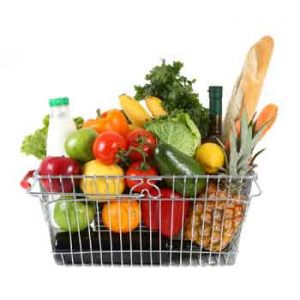
More evidence that low-calorie sweeteners are bad for your health
Studies show that artificial sweeteners can raise the risk of hypertension, metabolic syndrome, type 2 diabetes and heart disease, including stroke.

This time of year many of us turn our thoughts to healthy eating.
I was struck by reports of recent research which suggests that most shoppers operate under an ‘intuition’ that more expensive food is the healthier choice.
The soon to be published studies in the Journal of Consumer Research rightly says that while this belief may be true for some foods, it is by no means true across the board.
Reports on the studies were interesting because, as usual, the default position was to blame the consumer for being so silly and not really understanding the issue or the science.
But when it comes to the cost of healthy eating the ‘science’ can be very misleading.
Misleading ‘science’
The relationship between health and the price of food can be evaluated in a variety of ways, from price per calorie to price per average portion. Look at it one way and healthy food can seem prohibitively expensive. Look at it another way and it isn’t.
For instance, in 2014 researchers conducted a study which looked at changes in the price of 94 food items in the UK in the decade from 2002 to 2012.
Results showed that foods classified as healthier (such as fruit and vegetables) were more expensive per calorie than less healthy foods. The healthy foods increased more sharply in price over time, and in 2012 were three times more expensive on average per calorie than unhealthy foods.
By this kind of calculation a pound of sugar is better value than a pound of vegetables – a ludicrous notion to anyone other than a number cruncher who is disconnected from the reality of eating and health.
Nutrition, not calories
In contrast, when researchers from the USDA compared the prices of 4,439 “healthy” and “less healthy” in a variety of ways, including price of edible weight, price per average portion, and price per calorie, they drew a different conclusion.
When price of edible weight or price per portion were used as a baseline, the researchers found healthy foods – vegetables, fruits, wholegrains, dairy – were more affordable than most protein foods like lean roast beef, chicken breast, or canned tuna and other less healthful foods that typically include high levels of saturated fat, added sugar, and/or sodium.
In another study, when US researchers compared nutrient dense foods to junk foods, they found that energy-dense foods were the least expensive, and also more resistant to inflationary price hikes.
False economies
Eating well can cost more. On average, according to Harvard researchers, the healthiest diets cost about $1.50 (£1.20) more per day than the least healthy diets.
Not much for a middle income household to absorb, but admittedly more difficult for those on the lowest incomes who spend, proportionately, more of their total income on food.
But, just to put that figure in perspective, it’s about the same cost as a family size bottle of nutritionally dead diet cola per day. With information and education it’s doable – and the savings, in terms of health and healthcare costs later in life are immense.
Just plain food
It should be noted here that these surveys into the cost of food are talking about everyday foods and not the exotics which are the mainstay of the ‘clean eating’ fad, many of which can be ridiculously expensive.
Don’t get me wrong. Some of these niche foods are very nutritious but they belong in the world of supplemental nutrition rather than the centre of the plate. And, as research has shown, some can bring hidden problems.
Consider the avocado. A recent report in the Guardian asked, noted that the unprecedented international appetite for this unique fruit is indirectly fuelling illegal deforestation and environmental degradation. Avocados require lots of water, are sprayed with endless pesticides and the people who pick them for us are working for slave wages.
Looked at from that perspective it’s not such a ‘clean’ food. And of course, many of the nutrients you find in avocados can also be found in other, cheaper, foods. Sunflower seeds are a richer source of vitamin E. You can get vitamin K in broccoli and cabbage, monounsaturated oil in extra virgin olive oil, olives or lamb and folate in everyday pulses and vegetables, such as lentils and cauliflower.
Consumers’ belief that healthy food has to be more expensive does not arise in a vacuum. More often than not it’s a result of what we are told – often by very powerful and very expensive marketing campaigns and well-heeled, well-connected food gurus.
In a world where as many people are malnourished as they are hungry we have to find a way to push past the myth and find our way back to a more democratic view of better food for all.
Pat Thomas, Editor

Please subscribe me to your newsletter mailing list. I have read the
privacy statement